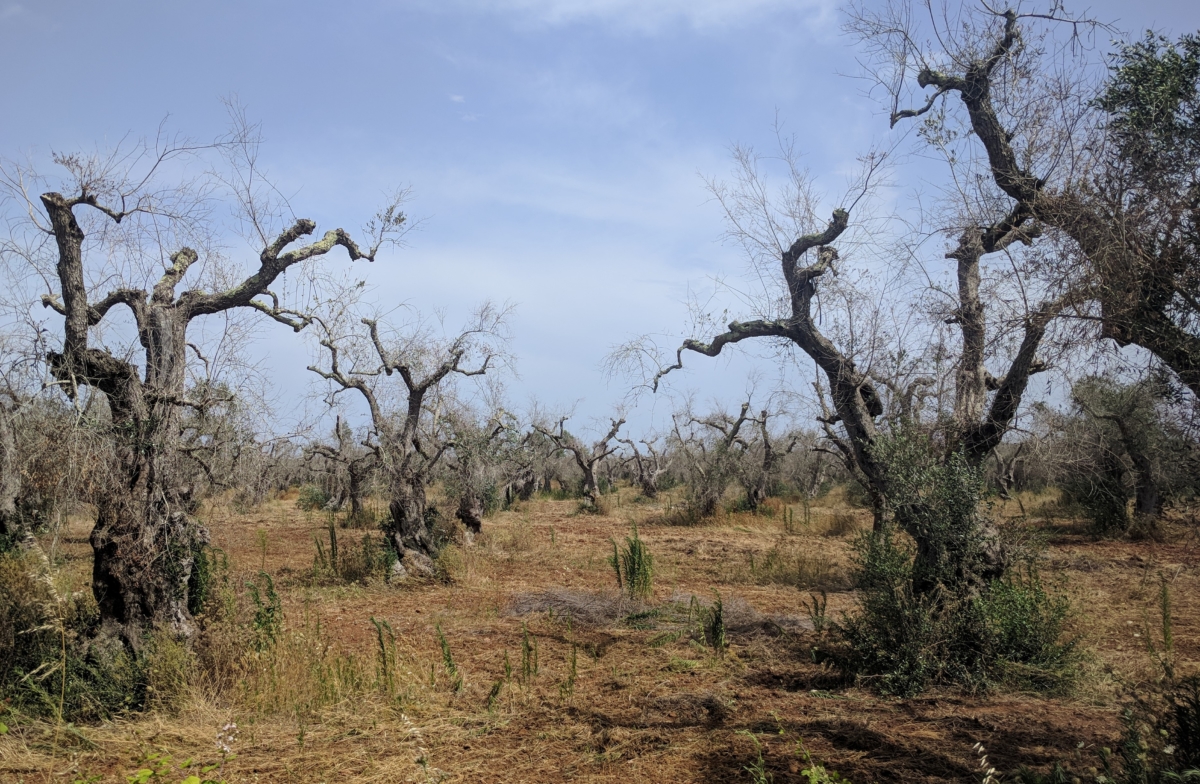Xylella fastidiosa (XF) epidemic in Italy began in 2013 when the pathogen was discovered in Salento olive trees. In Apulia this phytosanitary problem has led to a very serious scenario: the discredit of the scientific community, the birth of conspiracy theories, popular riots, and debates that have split public opinion.
Let’s try to explain, in a simple way, the characteristic of this disease.
What is Xylella?
It is a xilematic bacterium that is hosted by many plants: there is currently no cure. There are several subspecies of the bacterium, characterized by genetic peculiarities and specificity towards certain plants.
The one present in Italy is the pauca subspecies. Currently the epidemic is the subject of a containment programme, after eradication has been judged impossible. The disease that this bacterium causes in Italian olive trees is known as CoDiRO.
How did it get to Italy? Probably from Costa Rica, through accidental importation of infected plant material.
What does xilematic bacterium mean?
It means that its habitat is the xylem, one of the two vascular tissues of the plant and responsible for transporting water and nutrients from the soil to plant organs. When the bacterium finds good conditions, it colonizes the xylem forming a biofilm that represents a real obstruction of the conductive vessel and blocking the passage of water.
The plant undergoes a desiccation that can lead to the death of the organism: this explains why Xylella infections are sometimes mistaken for normal water stress.
How is it transmitted?
The bacterium is transmitted from plant to plant through an insect vector, which is able to acquire the pathogen from a colonized (even asymptomatic) plant and inoculate it into a healthy plant generating the infection.
What insect are we talking about? Or rather: which insects are we talking about? For the scientific community, in fact, every insect able to feed on xylem is a potential vector until proven otherwise. This conclusion derives from the fact that Xylella fastidiosa does not show a high specificity and several xylem-feeding insects are able to transmit it.
From an epidemiological point of view, in Italy the main insect vector is Philaenus spumarius, or “sputacchina”. Have you ever noticed, in the meadows in spring, small clouds of foam on the vegetation? Probably that foam encloses the juvenile stages of the insect.
The epidemiological picture is very complex: on the one hand, Xylella can colonize hundreds of plants, which can withstand different levels of infection for years without showing symptoms (or even never showing them). On the other hand, “sputacchina” is a very common insect, very abundant in agricultural ecosystems, and extremely polyphagous.






